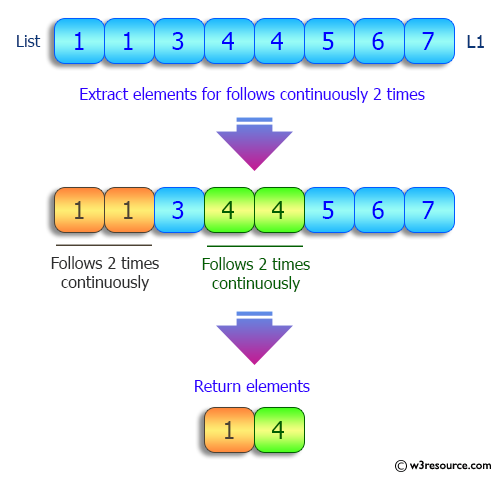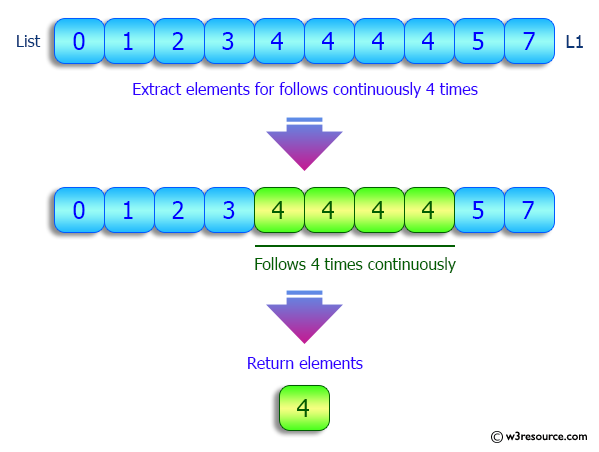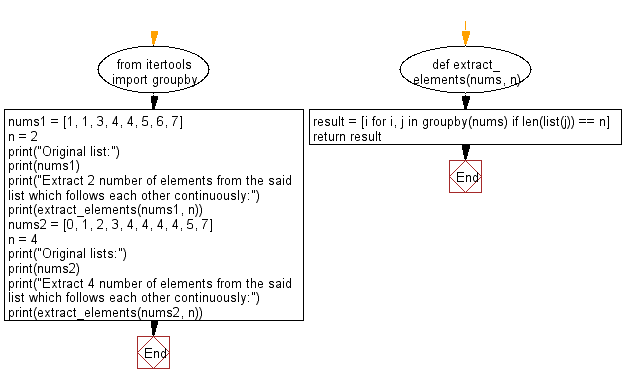Python: Extract specified number of elements from a given list, which follows each other continuously
Extract Continuous Elements from List
Write a Python program to extract specified number of elements from a given list, which follows each other continuously.
Visual Presentation:


Sample Solution:
Python Code:
# Import the 'groupby' function from the 'itertools' module
from itertools import groupby
# Define a function 'extract_elements' that extracts elements from a list that follow each other continuously and occur 'n' times
def extract_elements(nums, n):
# Use a list comprehension and 'groupby' to filter elements in 'nums' that occur 'n' times in a row
result = [i for i, j in groupby(nums) if len(list(j)) == n]
return result
# Create a list 'nums1' containing numbers
nums1 = [1, 1, 3, 4, 4, 5, 6, 7]
# Set the value of 'n' to 2
n = 2
# Print a message indicating the original list
print("Original list:")
# Print the contents of 'nums1'
print(nums1)
# Print a message indicating the number of elements to extract and the criteria for extraction
print("Extract 2 number of elements from the said list which follows each other continuously:")
# Call the 'extract_elements' function with 'nums1' and 'n', then print the result
print(extract_elements(nums1, n))
# Create a list 'nums2' containing numbers
nums2 = [0, 1, 2, 3, 4, 4, 4, 4, 5, 7]
# Set the value of 'n' to 4
n = 4
# Print a message indicating the original list
print("Original list:")
# Print the contents of 'nums2'
print(nums2)
# Print a message indicating the number of elements to extract and the criteria for extraction
print("Extract 4 number of elements from the said list which follows each other continuously:")
# Call the 'extract_elements' function with 'nums2' and 'n', then print the result
print(extract_elements(nums2, n))
Sample Output:
Original list: [1, 1, 3, 4, 4, 5, 6, 7] Extract 2 number of elements from the said list which follows each other continuously: [1, 4] Original lists: [0, 1, 2, 3, 4, 4, 4, 4, 5, 7] Extract 4 number of elements from the said list which follows each other continuously: [4]
Flowchart:

For more Practice: Solve these Related Problems:
- Write a Python program to find the longest consecutive sequence in a list.
- Write a Python program to find all sublists of a list.
- Write a Python program to extract the first increasing sequence from a list.
- Write a Python program to remove non-continuous elements from a list.
Go to:
Previous: Write a Python program to extract specified size of strings from a give list of string values.
Next: Write a Python program to find the difference between consecutive numbers in a given list.
Python Code Editor:
What is the difficulty level of this exercise?
Test your Programming skills with w3resource's quiz.
